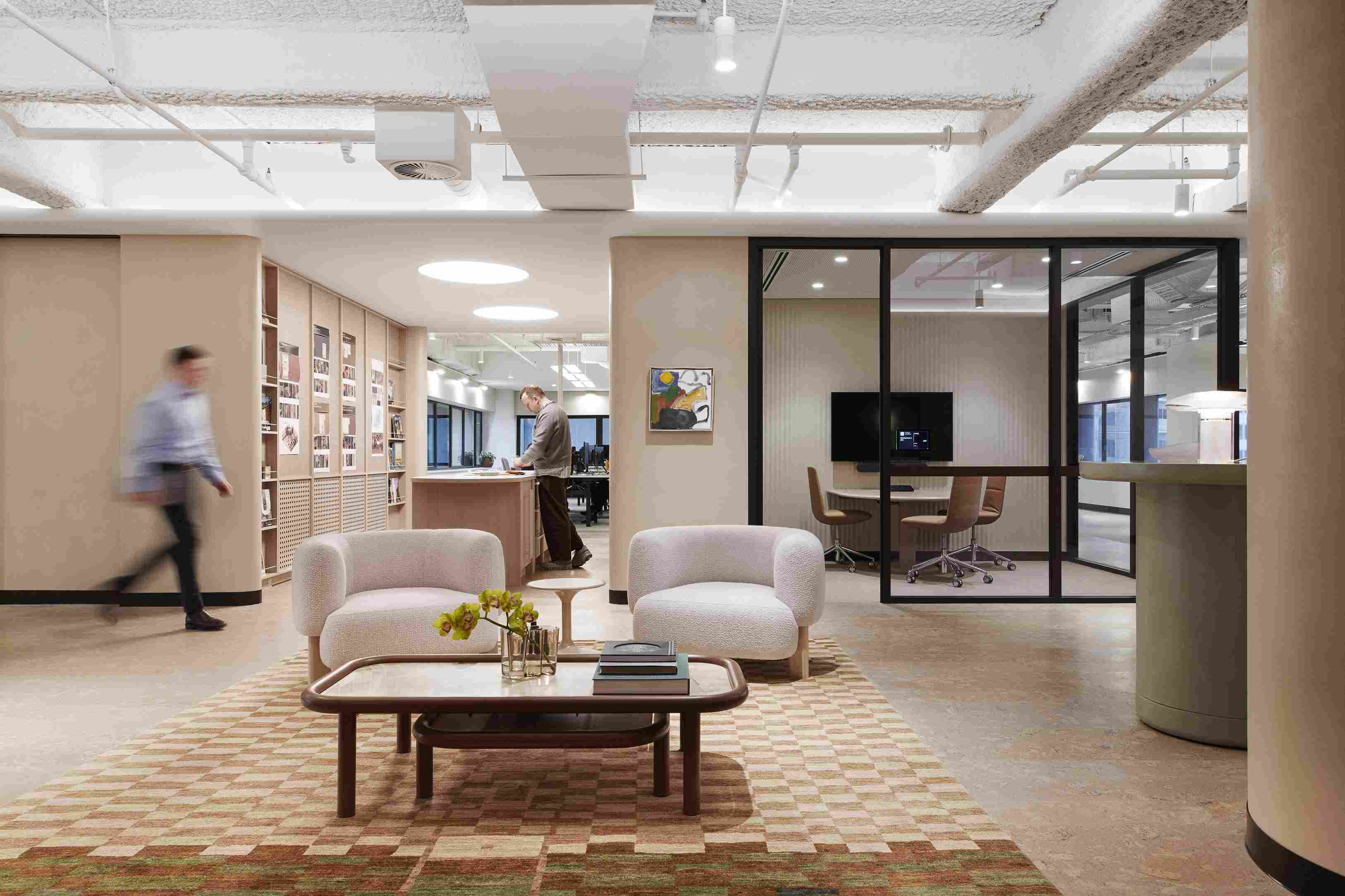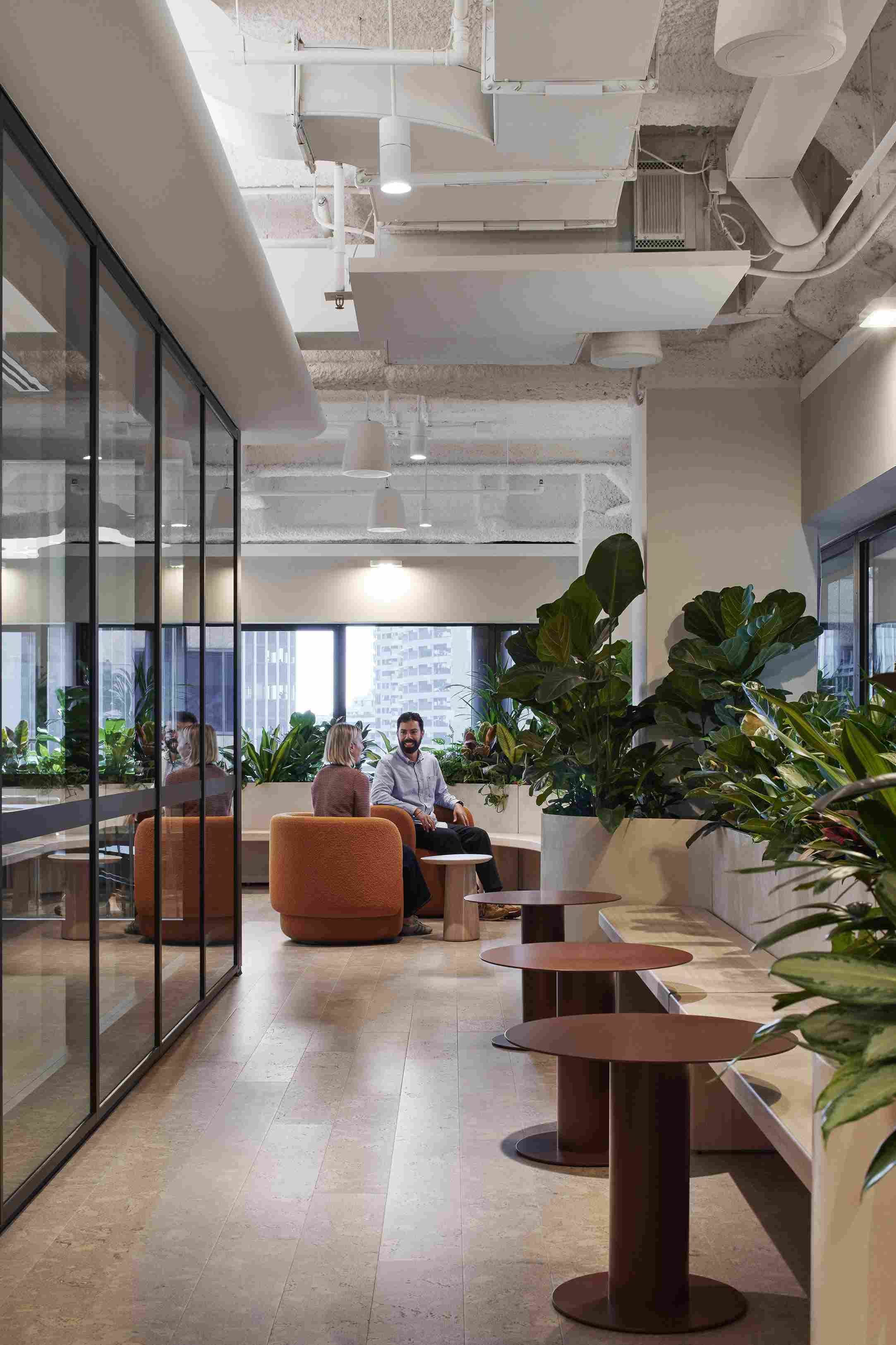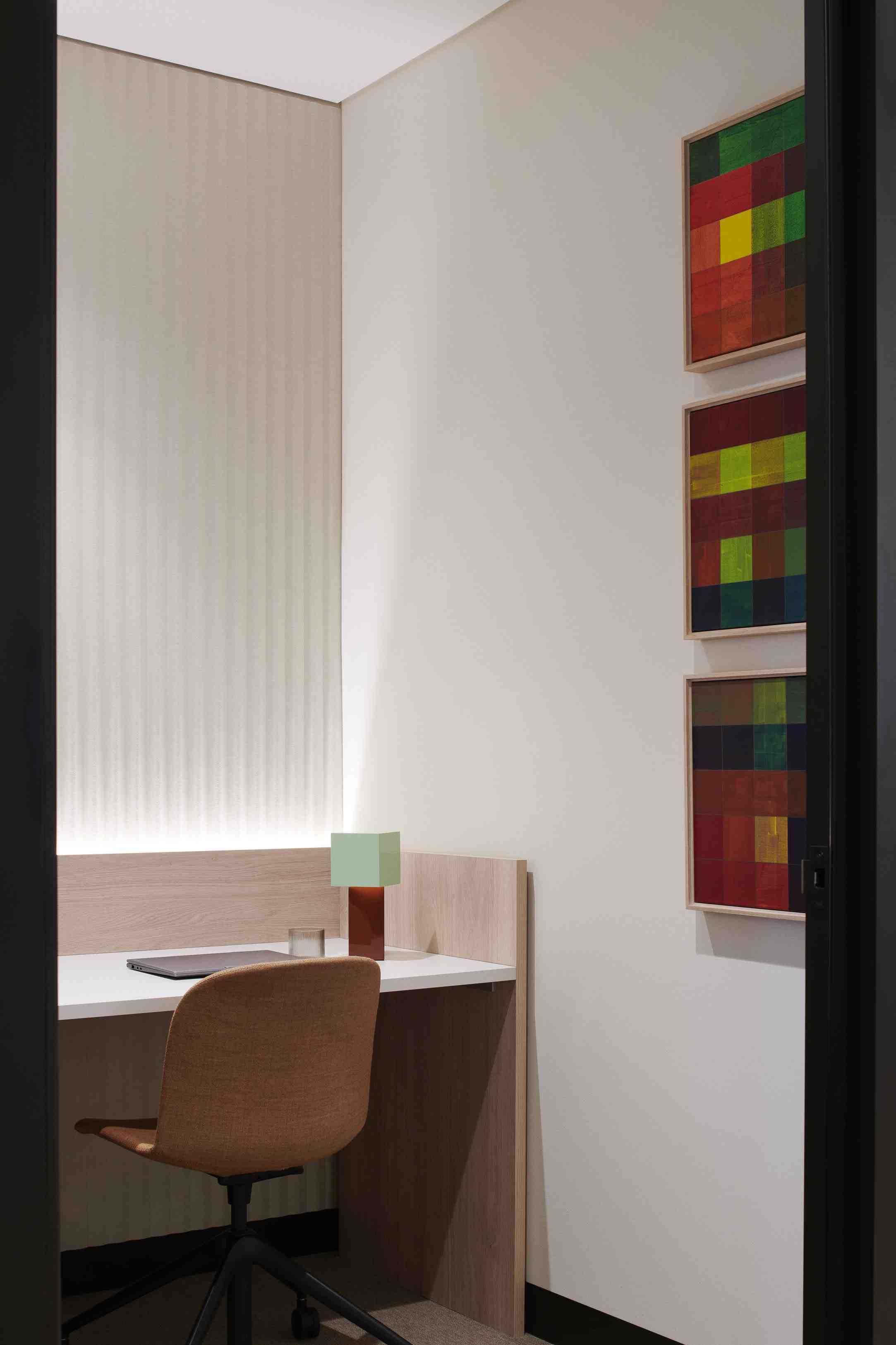
Designing Workplaces for Neurodiversity

Creating Inclusive, Flexible and Socially Connected Spaces
Workplace design is increasingly recognised as a powerful tool for shaping employee experience, wellbeing, and performance, often aligned with organisational ESG and DEI goals. While diversity, equity, and inclusion efforts typically focus on visible characteristics such as gender, age, or physical ability, a growing awareness of neurodiversity is shifting attention toward supporting “invisible diversity” in the built environment. Neurodiversity encompasses a wide sphere of diagnosable and personality differences, including autism, ADHD, dyslexia, anxiety, and traits along the introvert and extrovert spectrum. These differences should never be seen as deficits, but rather as natural variations in cognition, personality, and behaviour that influence how people perceive and interact with one another and with their surroundings. Designing with neurodiversity in mind benefits not only those who identify as neurodivergent but enhances workplace experience for everyone.
Consciously Designing for a Wider Sensory Range


From personal experience with my daughter, who was diagnosed with autism nearly ten years ago, and throughout my career as a workplace designer and strategist, I have seen how environmental factors such as lighting, daylight, temperature, noise, texture, layout, and control over personal space profoundly affect comfort, focus, and wellbeing. Increasing rates of childhood diagnoses suggest that many adults would benefit from workplaces designed to accommodate a wider sensory range. Consciously designing for this goes well beyond adhering to building codes. One of the most common barriers to adopting neurodiverse design principles is simply not knowing what to do or how to do it.
Fortunately, a growing community of neuro-inclusive consultants, workplace designers and change managers who are passionate about supporting a wider range of users, together with an increasing body of accessible reference materials is emerging. For example, Britain’s Standards Authority (BSI) published this non-complulsory standard in 2022 titled "Design for the Mind. Neurodiversity & the Build Environment" PAS 6463:2022 and HOK workplace designer Kay Sargeant very recently published Designing Neuroinclusive Workplaces also provides excellent guidance.
At its core, however, neuro-inclusive design is about consulting with a wide range of stakeholders to create environments that enhance belonging, reduce stress, foster inclusion, and facilitate dignified, equitable, and intuitive use for everyone.
Is the One Size Fits All Design Approach Enough?
The legacy “one-size-fits-all” approach to workplace design assumes that standardised task-based ergonomics for desks, meeting rooms, quiet rooms, and other settings can serve everyone. Historically, this approach was designed to suit the majority, with the understanding that around 5 percent of people at either end of the scale would require customised solutions. In reality, this model serves no one particularly well. While ergonomics and human factors remain important, assuming there is a single best solution such as one type of task chair or uniform furniture across all meeting rooms eliminates the opportunity to provide the variation needed to support both physical ergonomics and neurodiverse preferences. Whether due to cost perceptions, facilities management simplicity, lack of imagination, or resistance to variety, many organisations have been slow to move away from this outdated mindset.
It is also important to acknowledge that designing for neurodiversity can bring challenges and risks. Stigma and lack of understanding can discourage individuals from disclosing their needs or using designated spaces, leaving well-intentioned interventions under utilised. Practical constraints such as cost, limited floor space, or retrofit complexity are often cited as barriers, though many workplace strategies can be implemented cost-effectively if considered early in the design process. Perhaps the most significant risk is tokenism, creating symbolic “quiet rooms” or “sensory rooms” filled with beanbags and lava lamps without embedding systemic, cultural, and operational support. Without a broader approach that integrates individual agency and choice together with empathetic and enlightened leadership, such initiatives risk trivialising rather than supporting neurodiverse people.
Setting the Tone for Psychological Safety in the Workplace
Leadership plays a critical role in sustaining neuro-inclusive environments. Without active sponsorship and visible commitment from leaders and managers, even the best-designed spaces risk failing. Leadership sets the tone for psychological safety, the confidence employees have that they can disclose needs, request adjustments, or use alternative spaces without fear of judgement. If employees perceive stigma or lack of genuine support, they may avoid engaging with neuro-inclusive initiatives altogether. Conversely, when leaders model openness, normalise diverse working preferences, and encourage experimentation, they create the conditions for neuro-inclusive design to succeed. Embedding psychological safety into workplace culture ensures that physical design is reinforced by trust, empathy, and respect, turning design intent into positive lived experience.

Workplace design can support positive leadership and organisational culture by strengthening knowledge transfer and social networks, the glue that underpins innovation, collaboration, and knowledge sharing within teams. British anthropologist Robin Dunbar’s research on human social dynamics revealed that the neocortex limits the number of meaningful relationships humans can maintain, with a maximum group size of around 150, known as Dunbar’s number. This has direct implications for workplace design. Providing team-sized “neighbourhoods” within larger “villages” enables employees to form strong ties while avoiding social fragmentation. Strategies such as designing floor plates, workstation clusters, and neighbourhood groupings that break up vast “seas of workstations,” as well as distributing social and knowledge-sharing destinations vertically across multi-floor tenancies, support cohesive clusters, serendipitous interactions, and healthy physical movement.
How to Enhance the Emotional Experience at Work
The emotional experience of visiting a workplace is often overlooked. Adopting a hospitality-led mindset, one that goes beyond coffee and snacks to make employees and guests feel valued, welcomed, and supported, can transform average workplaces into attractive, engaging destinations. Employing people with the right personality in community host or concierge-style roles is critical to bringing well-designed spaces to life. Tables and chairs alone cannot create community. A skilled host can be the deciding factor in encouraging people to work from the office, a key challenge in today’s environment of hybrid work and low in-person attendance. Hosts are typically emotionally intelligent, outgoing, and service-minded, connecting people to spaces, experiences, and one another while activating workplace destinations and strengthening community, creating places that people genuinely love.
How to Start Creating a Neuro-Inclusive Workplace
For those commissioning and creating workplaces, the question is often: where to start? Practical neuro-inclusive strategies begin with genuinely engaging stakeholders, listening rather than assuming, and distilling their feedback through the lens of design and functionality. While Activity-Based Working (ABW) with unassigned seating can be challenging for individuals who rely on routine, dislike change or have strong sensory preferences, on balance it is often the most supportive model. By offering varied, bookable worksettings and cultural autonomy, ABW allows people to choose environments that align with their task, preference, or social need, rather than being restricted to a single assigned desk.
There is no single solution, but proven strategies include:
- Quiet and meeting rooms in low- and high-stimulation versions: low-stimulation spaces reduce visual and auditory input with cocoon-like acoustic panelling, soft tonal finishes, and controlled sightlines; high-stimulation spaces provide daylight, external views, and greater visibility of colleagues.
- Diverse open settings with sensory richness: high-back alcove lounges, booth seating, café-style hubs, and informal reading nooks with varied scale, texture, lighting, posture, and acoustics.
- Additional considerations: rounded furniture and partition edges, task-based adjustable lighting instead of uniform overhead lighting, equitable access to daylight and external views, legible directional signage, intuitive wayfinding, varied materials and colour, artwork, abundant planting and biophilia, natural soundscapes, outdoor spaces, and controlled but varied airflow and temperature.
Ultimately, designing workplaces for neurodiversity is not about aesthetics or ticking compliance boxes but about recognising, supporting, and celebrating human diversity. Designing for networks, choice, sensory variation, leadership, and flexibility creates workplaces that are functional, psychologically safe, and socially cohesive. Such environments unlock creativity, wellbeing, and connection for all employees, fostering inclusive and genuinely humane workplaces that benefit both people and organisational performance.

The Organisational Value of a Neuro-Inclusive Workplace
For executives, business leaders, and workplace professionals, the business case is clear: the design of workplaces and the commercial buildings that house them must prioritise neuro-inclusivity. When done well, it becomes a strategic enabler of organisational performance and human wellbeing. Begin by engaging employees through consultation and pilot programs to understand diverse needs in a respectful and psychologically safe way. Build radical flexibility and sensory choice into both physical environments and workplace policies, and most importantly, ensure through leadership and training that design intent is matched by cultural support. Finally, measure and iterate by tracking how spaces are used, how employees feel, and where adjustments are needed. In doing so, organisations can create workplaces that do more than house people: they nurture potential, amplify belonging, and future-proof performance, making work and the workplace more human.

About the Author
Domino Risch is the Director of Placeology. With an accomplished 25-year career as a workplace strategist and designer, Domino has transitioned to the role of work futurist. In this capacity, she broadens her influence beyond design and spatial solutions to shape the future of work and workplace environments through a strategic, holistic lens. Domino is dedicated to collaborating with individuals and organisations committed to advancing more human-centric work experiences.

%20(4).png?width=1366&height=768&name=Provide%20Value%20%26%20Clarity%20(Website)%20(4).png)



